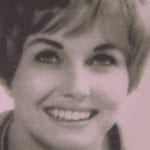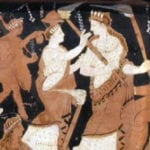 Animals
Animals  Animals
Animals  Weird Stuff
Weird Stuff 10 Weird Things People Used to Do at New Year’s
 Our World
Our World 10 Archaeological Discoveries of 2025 That Refined History
 Weird Stuff
Weird Stuff 10 Fascinating Facts You Might Not Know About Snow
 Miscellaneous
Miscellaneous Top 10 Things Crypto Was Supposed to Change & What Actually Did
 History
History 10 Huge Historical Events That Happened on Christmas Eve
 Music
Music 10 Surprising Origin Stories of Your Favorite Holiday Songs
 History
History 10 Less Than Jolly Events That Occurred on December 25
 Weird Stuff
Weird Stuff 10 Funny Ways That Researchers Overthink Christmas
 Politics
Politics 10 Political Scandals That Sent Crowds Into the Streets
 Animals
Animals 10 Species That Refused to Go Extinct
 Weird Stuff
Weird Stuff 10 Weird Things People Used to Do at New Year’s
 Our World
Our World 10 Archaeological Discoveries of 2025 That Refined History
Who's Behind Listverse?

Jamie Frater
Head Editor
Jamie founded Listverse due to an insatiable desire to share fascinating, obscure, and bizarre facts. He has been a guest speaker on numerous national radio and television stations and is a five time published author.
More About Us Weird Stuff
Weird Stuff 10 Fascinating Facts You Might Not Know About Snow
 Miscellaneous
Miscellaneous Top 10 Things Crypto Was Supposed to Change & What Actually Did
 History
History 10 Huge Historical Events That Happened on Christmas Eve
 Music
Music 10 Surprising Origin Stories of Your Favorite Holiday Songs
 History
History 10 Less Than Jolly Events That Occurred on December 25
 Weird Stuff
Weird Stuff 10 Funny Ways That Researchers Overthink Christmas
 Politics
Politics 10 Political Scandals That Sent Crowds Into the Streets
10 Unsolved Sea Mysteries
As amazing and breathtaking as the world’s oceans may be, they’re even more mysterious and sometimes cling unyieldingly to their secrets and mysteries. There are some parts of the ocean that no person has ever even been able to visit, and it’s in these parts that some of Earth’s unsolved mysteries lay waiting to be uncovered. Alternatively, strange things sometimes happen right where people can witness it but remain mysterious nevertheless.
10 USS Scorpion
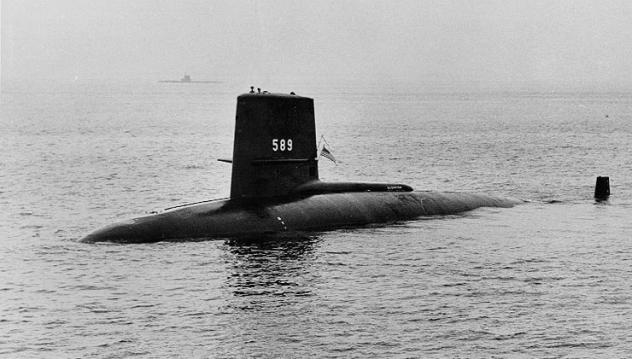
In February 1968, the submarine USS Scorpion departed from Norfolk, Virginia, and headed toward the Mediterranean. It had almost a decade of reliable service behind it, and there were no qualms about the journey as the sub set out to the open sea. Three months later, the Scorpion ran into unknown trouble, and its broken pieces ended up scattered on the ocean floor. On May 27, 1968, family members of the Scorpion‘s crew waited in vain on a dock for their loved ones to return. It was October before the Navy would find the wreckage of the Scorpion and realize the horrible truth—that all 99 men onboard had lost their lives.
Investigations into the cause of the tragedy proved fruitless, even after Robert Ballard visited the site in 1985. He soon moved on to bigger things when he discovered the wreck of the Titanic that same year. In 2012, calls were made for new expeditions to the Scorpion‘s wreck site so that experts can once again try to fit the pieces of the mystery together.
Nothing came of this, and the theories continue to fly. Some conspiracy theories hold that the sub may have been downed by a Soviet attack that they never saw coming, while others believe that a mishap with one of the Scorpion’s own torpedoes may be to blame. Experts believe that if the sub had mistakenly fired off a torpedo during training, it would have turned back on itself and hit the sub, which would have been the closest and possibly the only target at the time. Others are adamant that if the sub’s propeller shaft malfunctioned, it may have caused stress to the engine coupling. This might have led to it breaking, causing water to overrun the sub.
The only thing certain about what happened to the USS Scorpion all those years ago is that some family and friends still wonder to this day what exactly happened to the 99 men out there in the ocean on that fateful May day.
9 Murder At Sea
Cell phones are lost every day, some by accident, some stolen. The majority of times, these incidents mean absolutely nothing other than that someone has to go and get a new phone. Other times, an innocent-looking cell phone might just harbor a terrible secret. This is exactly what happened when an abandoned cell phone was found in a taxi in Fiji in 2014. A video found on this phone landed on the Internet not long after and eventually attracted the attention of police.
The almost seven-minute-long video contains chilling footage of four men clinging to the wreckage of a small boat or treading water in the open sea while surrounded by laughing men on several tuna long-liners. One of the men can be seen trying to lift his arms. The next moment, he is shot in the head by someone onboard one of the boats. As the video unfolds, the other three men are also shot in cold blood as their killers are urged to do so by a loud voice over a loudspeaker. They then continue to laugh carefree while posing for selfies.
In spite of many witnesses, not one of these murders was reported, and they only came to light after the cell phone video was posted online. Taiwan authorities tried to investigate after they identified one of the fishing boats as belonging to the country, but the investigation hit a dead end, as they could not identify the captain or crew. The victims’ bodies were never found, and the reason for their murders remains a mystery. The exact location of the tragedy also has yet to be identified.
8 Baltic Sea Submarine
Toward the latter part of 2014, Sweden was aggrieved by Moscow after two Russian fighter jets entered its airspace without permission. Around the same time, a government intelligence official was abducted and forcefully taken to Moscow by Russian agents. A Russian surveillance craft had to be escorted out of Estonian airspace by NATO jets just a month later.
Adding to the Swedish jitters, several citizens reported seeing a mystery vessel, described as a Russian submarine, in the Baltic Sea. It seemed to them that the sub may have run into trouble, which would have been the reason for its stationary position. The military wasted no time in investigating these sightings, taking a whole week to search land and water for any trace of the mysterious sub. The media immediately jumped on the bandwagon, calling the search “the hunt for Reds in October.” It naturally didn’t help that the Swedish military directly related their search to “foreign underwater activity.” This only fueled the “conspiracy.”
Amid all the searching, clear memories of the Cold War came back to those who had lived through it. It was almost like deja vu, since in the 1970s and 1980s, Sweden would conduct regular fruitless searches for foreign (aka Russian) submarines. It would be the same outcome this time. The mysterious submarine that so many had seen in the Baltic Sea was never discovered. If it was indeed there, the reason will never be known, either.
7 Bermeja Island
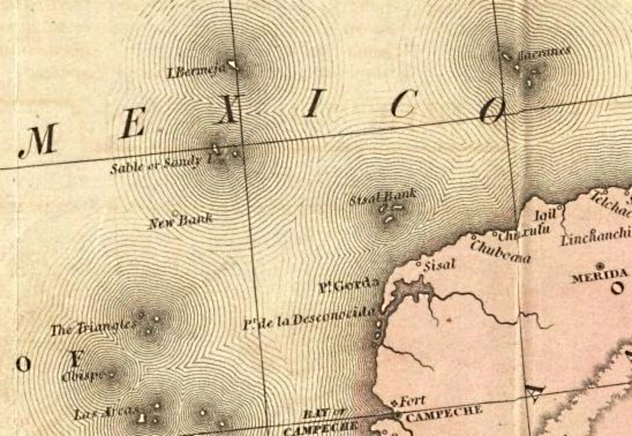
In the 1970s, Bermeja Island served as a marker for Mexico to set its 200-nautical-mile economic zone. Just about 20 years later, the island disappeared without a trace. Along with the island went important documents containing a treaty regarding major oil reserves within the island’s region. The disappearance of these documents immediately gave rise to conspiracy theories that the CIA had something to do with the vanishing island, ensuring that the US would get the oil. The main theory has it that the CIA actually blew up the island in order to expand the US’s economic zone.
The island is mentioned in a 1998 book about Mexican islands, disregarding the fact that a fishing expedition party already reported that they were unable to locate it the previous year. Bermeja Island was found on historical maps between 1535 and 1775, after which it also mysteriously seemed to vanish from any geographical records, right up until 1857, when a US map once again included it. The timelines vary according to different sources, with some saying that the Mexican government actually went looking for the island in 1997 but were unable to locate it.
Further research in 2009 also didn’t turn up any missing islands, stirring further confusion as to whether the island ever actually existed. The mystery of Bermeja Island seems likely to remain for a while.
6 Gulf Of Alaska Whale Deaths
In 2015, 30 whales stranded themselves on Alaskan shores. The majority died within the Kodiak archipelago. Upon investigation, experts found that all of the whales except for one were fin whales. While toxic algae seemed to be the logical reason for the deaths of these mammals at first, scientists soon realized that it could not be the case, since no other species turned up dead on any of the beaches. A few months earlier a mass die-off of common murres also occurred along the shores of Alaska, but scientists aren’t certain that the birds and the whales died of the same cause.
Considering that there may have been more dead whales out there, reached first by scavengers or floating out of reach in the ocean, the fact that the mystery of the mass whale death (up to three times the average) remains unsolved is quite disturbing. The ongoing investigation is focusing on nine fin whale carcasses floating near Kodiak Island.
Experts believe that all the whales died at the same time. Tests for the ingestion of toxic matter have been done on one of them so far, and a full-fledged investigation could possibly take years to complete. Even such an undertaking might yield no answers as to what may have caused the death of these whales.
5 Gulf Of Mexico Shipwreck

In 2001, ExxonMobil got a lot more than they bargained for when they laid an oil pipeline in the Gulf of Mexico. While busy with the construction of the pipe, they struck a 200-year-old shipwreck lying forgotten about 800 meters (2,600 ft) under the surface. Immediately, marine archaeologists took the opportunity to explore the wreck by using the latest technology available at the time.
Brett A. Phaneuf, a scientist from Texas who put the expedition together, had expected to finish the investigation by 2002, but what came to be known as “the curse of the wreck” seemed to throw more than just a spanner into the works. Twice, he and his team of experts tried to extract artifacts from the ship without any luck.
On his third attempt to bring up something from the ship using a robotic submarine, things once again went wrong. Not even 30 minutes into the water, the sub’s hydraulic system gave in, as did the electronics monitoring the sub. After these problems were sorted out over the next two hours, the submarine safely reached the wreck, and Phaneuf immediately noticed a piece of wood stuck awkwardly at the bottom.
But before he and his crew could investigate, the sonar failed, as did the camera’s ability to zoom in on objects. Not wanting to give up, the operators of the sub tried to use the robotic arm to pull a sheet of copper off the ship’s hull, as this might have indicated whether the ship was indeed built in the early 1800s, when the British Navy started nailing copper plates to their warships to protect them from insects. Phaneuf thought that the signature mark or name of the coppersmith who provided the copper might be visible on it. The submarine arm had the sheet firmly in its grip as it backed away, but then the sheet tore, leaving only a small piece stuck in the claw.
The next efforts to obtain a piece of the ship or its artifacts saw a new robot submarine getting lost in the water after veering out of control. Then, the robotic arm of the next one was too short to reach anything from the ship. Another time, a robot sub managed to grab the stern post of the ship when its hydraulics failed, and the stern post was lost.
Many more mishaps continued to occur, leading some to believe that the wreck was indeed cursed, and the ghosts of those who may have perished aboard the ship did not want to be disturbed. The shipwreck and its “treasures” therefore remain a mystery.
4 SS Edmund Fitzgerald
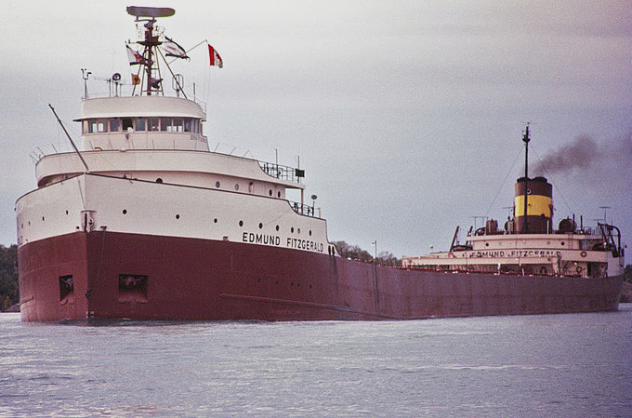
Lake Superior is so big that it behaves like an inland sea, including nasty storms. In November 1975, a massive storm battered the lake just as the gigantic ore carrier SS Edmund Fitzgerald departed for Detroit. By the next morning, the Fitzgerald and another carrier, the Arthur M. Anderson, had altered their routes to a more northerly direction as their captains tried to shield the ships and crew from the increasingly strong gales.
Captain Ernest McSorley, in charge of the Fitzgerald, knew that this was no regular storm, and he reported to the Coast Guard that his ship was in peril, taking on huge waves and listing to the side. McSorley decided to try to make it to Whitefish Bay to get the Fitzgerald out of harm’s way. Unfortunately, about an hour after the captain made his intentions known over the radio, the ship disappeared from radar. There had been no call for assistance before the communication blackout.
The Anderson made it to Whitefish Bay in one piece, but its captain, Bernie Cooper, heroically decided to head back out into the awful storm to search for the crew of the Fitzgerald. They only turned up two battered lifeboats and a single life jacket floating in the rough water.
Just a week later, a sonar ship searching for the Fitzgerald found its wreck lying more than 150 meters (500 ft) under the water, its taconite pellets scattered on the lake floor. The carrier was torn apart. However, not one body was ever recovered from the shipwreck. Even though it is fairly certain that the storm was the main factor in the ship’s fate, it remains a mystery to this day exactly what caused the ship to finally go down and perhaps more importantly where the remains of its crew members lie.
The mystery remains after 40 years, as do the superstitions. Freight ships watch the weather report with an eagle eye and will not start on any journey should a storm be forecast for the area.
3 The Patanela

In October 1988, Michael Calvin and his friend John Blissett set out to sea on a luxury schooner called the Patanela. The two crewmen had started off from Fremantle, Australia, on their way to the Whitsundays. From there, they continued on to Port Lincoln, where Calvin mailed a letter to his twin sister, in which he wrote of the good time he was having and how good the weather at sea was.
Calvin and Blissett were also planning to start their own charter business after they had been home for the Christmas holidays, since they had been given permission to use the Patanela for that very purpose. The two young men were very excited as they continued on their journey to Arlie Beach. Calvin also mentioned to his sister that he and Blissett decided to put a message in a bottle stating that whoever found it would be entitled to a free holiday onboard the luxury boat.
Tragically, Calvin and Blissett’s dreams were never to be realized, as a few weeks after Michael Calvin posted the happy letter to his sister, the Patanela disappeared off the coast of Sydney. Michael Calvin and John Blissett were never seen or heard from again.
On New Year’s Eve 2007, Sheryl Waideman, her husband, and her brother set off to the beach near Eucla to ring in the new year with swimming and beachcombing. Waideman was strolling along the beach looking for “treasure” when she saw a bottle stuck upside-down in the sand. Seeing that there was a note with writing on it inside the bottle, Waideman took it back home with her and found the following written on it:
Hi there. Out here in the lonely Southern Ocean and thought we would give away a free holiday in the Whitsunday Islands in north Queensland, Australia. Our ship is travelling from Fremantle, Western Aust, to Queensland to work as a charter vessel.
The note included John Blissett’s telephone number as well as the Patanela’s position in the ocean at the time. It indicated that foul play could be ruled out as a possible cause for the boat’s disappearance, but the mystery of what exactly happened out at sea in 1988 remains.
2 John Halford
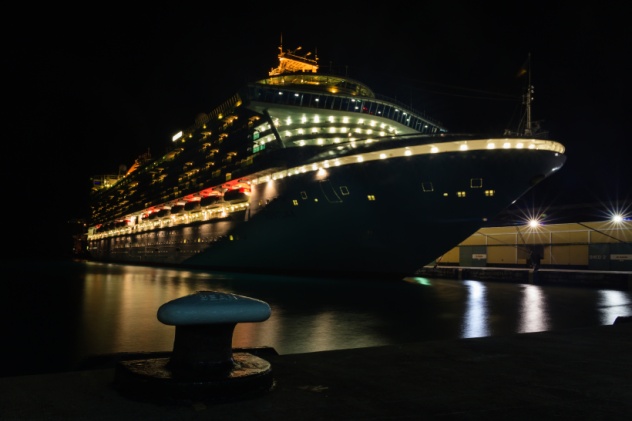
In 2011, 63-year-old John Halford ran his own successful business and was about to celebrate his 25th wedding anniversary with his wife, Ruth, with whom he shared three beautiful children. Halford was on top of the world, but he still had a dream that he wanted to fulfill before retiring—to go on a cruise. His dream came true that same year when he set off on a seven-day Thomson’s cruise on March 31.
Halford seemingly had the time of his life on the cruise liner, judging by the texts he sent his wife. Near midnight on the last evening of the cruise, John Halford was enjoying cocktails at the ship’s bar as the ship neared its final destination. He had sent his wife a text earlier with his flight details so that she could pick him up from the airport.
Ruth, who had missed her husband very much during his well-deserved break, couldn’t wait to go to the airport and meet him. Before she could leave, however, she received a call from the cruise company to inform her that John would not be at the airport, as he had gone missing from the ship at some point between midnight and 7:00 AM the next morning, when all the other passengers disembarked.
John Halford was never seen again. His wife and children fear that he went over the railing of the cruise liner, although the Thomson’s company strongly denied that this would be possible. Tragically, Halford is just one of more than 150 people who’ve mysteriously disappeared on cruise ships since the turn of the new millennium.
1 Aegean Sea Ruins
Toward the end of 2014, remnants of an ancient civilization, previously thought to be simply the remains of docks, were found just off the Greek island of Delos. The Greek media pounced on the news of the discovery, aptly named the “underwater Pompeii.” The discovery, which included the remains of a pottery workshop, terracotta pots, and a kiln, was made on the coast of Delos. This puzzled experts, as previous similar discoveries were all made near ports.
During their excavation of the site, archaeologists also found multiple large rocks set out in front of the pottery workshop and the ruins of other buildings. Many of the structures found remain unidentified, adding to the bigger mystery of how and why the ancient city ended up under the sea to begin with.
The workshop resembles similar ones found previously in Herculaneum and Pompeii. Archaeologists are continuing their research in relation to this latest discovery, as they are expecting it to bring to light more details of the history of Delos Island, which was abandoned in the sixth century AD and today is protected as a UNESCO World Heritage Site.
Estelle lives in Gauteng, South Africa. She loves the sea and mysteries of all kinds. When they go together, it’s just so much better!
